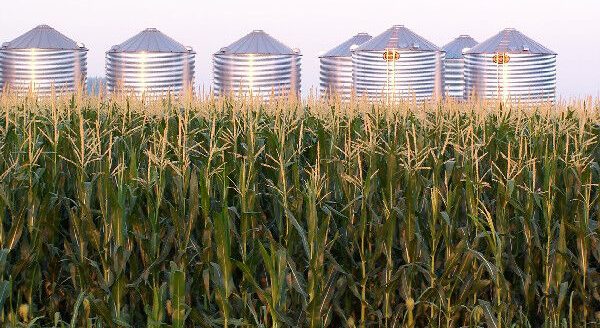Grain and livestock producers have reasons to be optimistic heading into 2023, but there are substantial headwinds that could put a damper in the years that follow.
Pat Westhoff, director of the Food and Agricultural Policy Research Institute at the University of Missouri, spoke about the findings of his research team in the Aug. 30 outlook.
Westhoff said inflation, drought and Russia’s invasion of Ukraine have caught the attention of grain and livestock producers in 2022 and ramifications remain in the years ahead.
Inflationary factors
The Consumer Price Index is expected to be at about 9% for 2022. Westhoff expects the level to come down to 2.6% in 2022 and for food inflation at about 2.3% and assumptions to stay in the lower 2% range through 2027.
“Food inflation and overall inflation has been in the headlines but few predicted 9% in food and overall inflation when putting together a 2022 projection. But there are some signs that inflation might be abating in the not too distant future. Clearly, commodity prices were well off their peak levels earlier this year,” Westhoff said. Kansas State University recently noted in a webinar that most commodities hit their peak price around June 21.
“Fuel prices are off their peaks from earlier this year and at least some of the supply chain problems we’ve seen are starting to ease now but we still have plenty of them out there.”
An unknown is how much consumers are willing to continue to pay for higher food price items, particularly at the grocery store, he said, adding that it is yet to be determined what level retailers will begin to start passing down reduced costs to consumers.
Drought
Westhoff says that drought has its toughest impact on ranchers.
“If you think about how drought tends to play out in this country, if you’re east of the Mississippi River, they tend to be kind of random and what happens one year doesn’t seem to be that much of a predictor of what happens the next year,” Westhoff said. “In some western states we tend to experience more multi-year drought situations and unfortunately we’ve had several already in some parts of the country and there’s probably a reason to expect that to continue for some time to come.”
The drought situation means fewer cows across the country when in normal times it would signal herd expansion, he said, instead it means more pounds through liquidation are being sent through supermarkets. The FAPRI projection calls for the number of beef cows, cattle and calves to decline from 30.1 million head and 91.9 million head, respectively, to 28.7 million and 87.7 million by 2027.
Oklahoma City feeder steers, weighing 600 to 650 pounds, were projected to be $198 per hundredweight in 2023 and could hit $218 by 2027 as compared to the five states area direct projection that still shows an increase from $151 per hundredweight to $158. The lean barrows and gilts show a slight decrease from $66 per hundredweight to $57 per hundredweight in 2027.
“Consumer demand for beef remains strong and that is good for the industry but there will be a lot fewer cattle coming through the pipeline and that will take several years to rebuild the herd.”
Russia-Ukraine war
Predictions with a war in a key exporting country are always going to add a variable. “The Russian invasion of Ukraine we thought we’d be closer to a resolution by now than we certainly appear to be, at the moment. But it is encouraging that at least some shipments of grain are happening.”
How it will resolve itself in the next 1 1/2 to two years is anyone’s guess but the FAPRI report builds in an assumption that there will probably be another year of major disruption before a return to a normal closer projection.
“There’s always going to be uncertainty in agriculture,” Westhoff said. “It’s really true that we definitely don’t know what’s going to be exactly the results in a year or two-year time. But we think we can capture some of the longer term trends as best we can and identify and most importantly, perhaps, identify the factors that cause things to change. There is always a bad weather situation or a shock somewhere in the world because of geopolitical or any other number of challenges.”
Sign up for HPJ Insights
Our weekly newsletter delivers the latest news straight to your inbox including breaking news, our exclusive columns and much more.
Crop production findings were based on July 2022 forecasts by S&P Global. For 2022-23 the projected prices per bushel for soybeans, wheat and corn were projected at $14.22, $9.05, and $6.34, respectively, but the report also shows a downward trend the farther out it goes and by 2027-28 the price estimated for those crops was $11.22, $5.77, and $4.37.
Weather patterns in key production regions around the world have reduced crop production in the United States and Europe and reduced the South American soybean crops, the report stated.
Tight global supplies resulted in record prices for wheat and cotton and near-record prices for corn and soybeans. For the 2022-23 marketing year, wheat prices are projected to exceed $9 per bushel, corn tops $6 per bushel, soybeans are more than $14 per bushel and cotton prices average 96 cents per pound.
Input costs
Prices for fertilizer, fuel and many other farm inputs were up very sharply in 2022. Variable corn production expenses increased by an estimate $164 per acre and projected inputs costs moderate in the years ahead but remain well above the 2021 level.
Reducing inflation rate will help producers, although it will mean lower grain prices, it should bring down the cost of fertilizer and inflation. The Federal Reserve has been increasing the interest rate for borrowers and will mean higher expenses particularly for farmers and ranchers who use operating loans to manage cash flows.
Many producers were able to contract at least some of their expenses in advance of the 2022 growing season but they will not have that opportunity heading into the 2023 growing season.
“I think a very major factor is going to be of all things how cold the winter will be Europe,” Westhoff said. “They need natural gas and the Russians so far are saying they will refuse to supply Europe. If that’s the case we’re going to have incredibly high prices for natural gas and even higher than we currently do.”
Natural gas is needed to produce nitrogen fertilizer and as such is an important commodity on the global market. If they (Europeans) have to use it for heat they cannot produce as much fertilizer for themselves and that means buying fertilizer elsewhere and that tightens global supplies and drives up prices.”
A look beyond
As the FAPRI team looked ahead to the next five years, Westhoff said farmers and ranchers will need a risk management strategy that forecasts higher input and interest costs and they should figure on lower prices for most commodities.
“Try to mitigate your risk,” Westhoff said. “That’s old-fashioned advice but it works.”
Producers who rent need to work with their landlords so they are not caught in a scenario where expenses will squeeze them, particularly when land values are continuing to go higher.
He also said grain farmers need to pay attention to U.S. Department of Agriculture programs, particularly crop insurance. He says high commodity prices may shut them out of some programs but there may be other programs to take advantage. FAPRI indicates Conservation Reserve Program acres are likely to head from about 22 million acres to 26 million acres in the next five years.
In looking at the study he notes that in 2023 most reports are indicating that corn will continue to hover around 91 million acres through 2027 and soybeans at about 86 million acres. Westhoff thought that with higher fertilizer costs it might have meant a trend away from corn to soybeans that has not been seen yet although he might see producers reduce some. He also thinks wheat acres could go up from approximately 47 million to 49.5 million acres over the next five years.
Ethanol and biofuels depend on how the Environmental Protection Agency will direct biofuels and renewable sources, he said. Producers will need to pay attention to blending levels and the development of sustainable aviation fuel as potential impacts to grain prices. Renewable diesel production is projected to overtake methyl-ester biodiesel as soon as 2023 and tax credits provisions in the Inflation Reduction Act could lead to modest expansion of sustainable aviation fuel production.
While there has been much talk about building more electric vehicles that it remains an unknown on its overall impact in the short term, Westhoff said. Long term motor fuel use is projected to decrease and that will also impact the biofuel industry as will foreign demand and export opportunities for the U.S.
Milk prices in many categories are expected to stay high and while production is expected to increase so is international demand, the report notes. It also projects sorghum plantings to stay in the 6 million acres range through 2027. Similarly, peanuts, sunflower seeds and canola are all expected to stay below 2 million acres. Cotton and rice planted acres are expected to be in the 11.75 million and 2.5 million, respectively. Hay production harvesting is also expected to be about 51.5 million acres each year.
The FAPRI report is available www.fapri.missouri.edu.
Dave Bergmeier can be reached at 620-227-1822 or [email protected].




